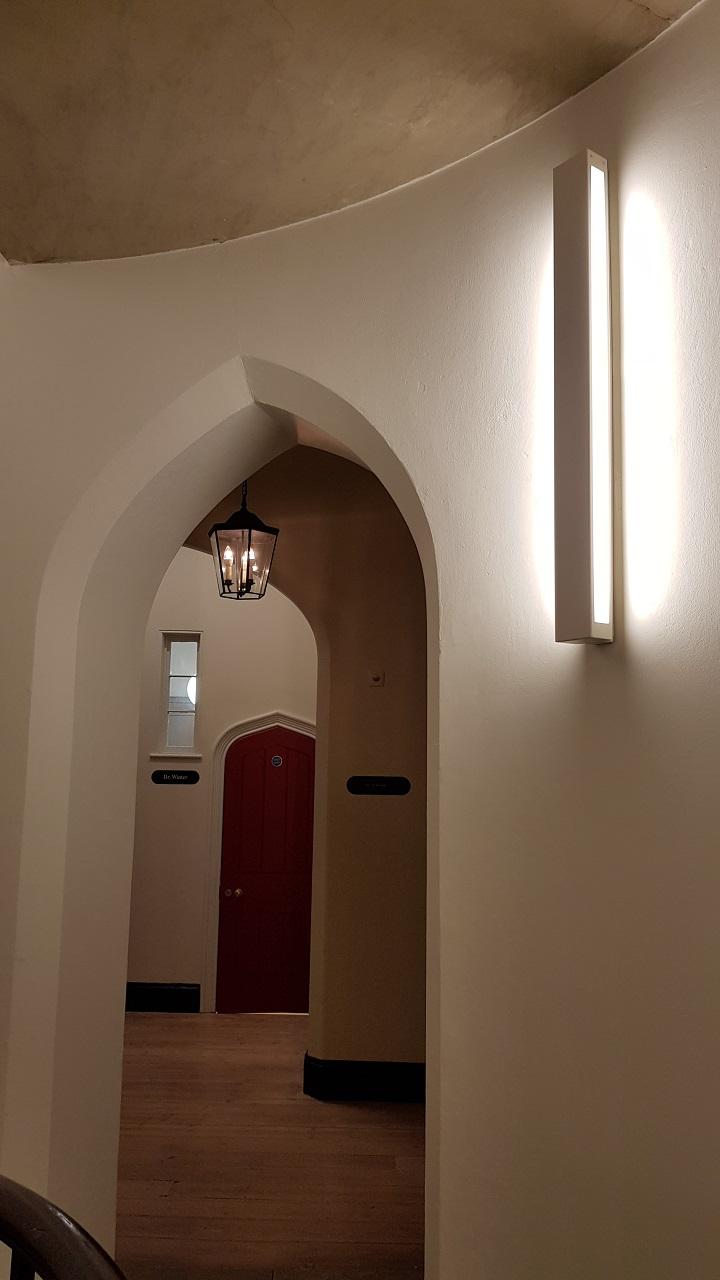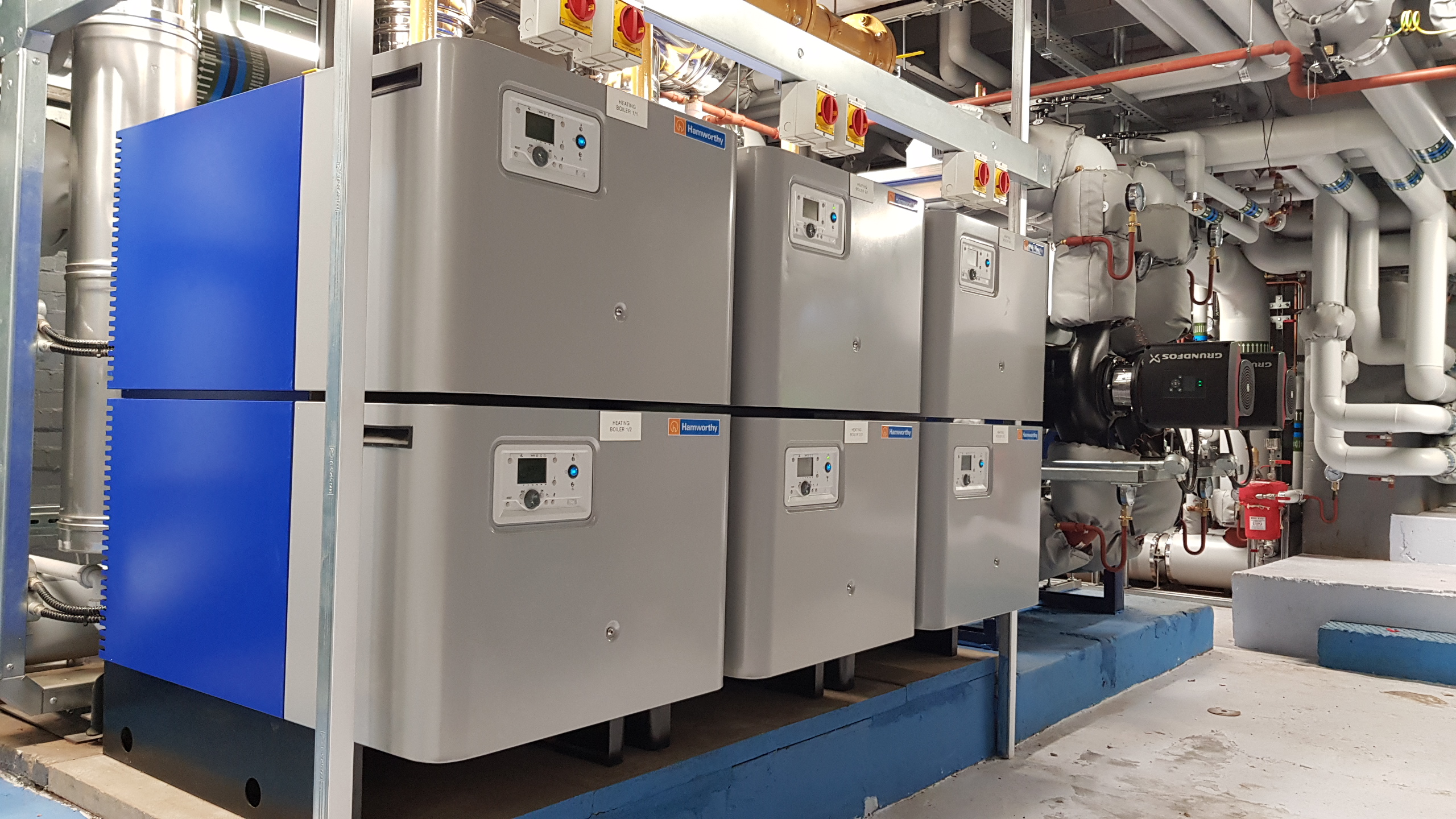
Submitted by Grainne Kennedy on Tue, 2019-01-29 14:01
When we think of energy efficiency we probably think of the newest, shiniest buildings but improving the energy efficiency of our existing and older buildings is very important especially when you consider that up to 85% of the building stock we have today will still be in use in 2050; the year when the UK hopes to achieve an emissions reduction of 80%. Luckily, some of the oldest institutions in Cambridge - our Colleges, are taking the issue of energy efficiency very seriously and are investing in a sustainable future.
St John’s College
A sustainability aspiration and setting environmental goals are key objectives for St John’s College. The College’s Maintenance Department, who are responsible for the ongoing running, refurbishment and general improvement of the College estate, are committed to these objectives and continually strive to improve the energy efficiency of their buildings.
The Maintenance Department aim to; reduce the energy demand of the College, both now and in the future, reduce the overall carbon emissions of the College and ensure the College is equipped to meet the changing environment.
A recent project carried out to meet these aims was a refurbishment of one of their largest boiler houses (1.32MW). A high efficiency condensing boiler was installed which resulted in the reduction of boiler sizes and the opportunity was taken to fit improved building management system controls, inverter controlled pumps, metering to monitor energy consumption and insulation.
The improvement of energy efficiency is ongoing across the College with the Maintenance Department carrying a number of regular improvements, such as; the replacement of conventional lamps with LED’s (see above), installation of lighting occupancy controls and the implementation of ‘power manager’ software to monitor energy consumption. Over the long term St. John’s have a programme for the replacing conventional boilers with high efficiency condensing boilers, they are improving building management system controls, and they have a rolling building refurbishment programme.

Figure 1: Upgraded heating system St John's College
King’s College
Energy efficiency improvements in King’s College are taking place on three sites: Cranmer, Croft Garden’s and Old Garden’s Hostel.
Cranmer Development - This development aims to deliver 59 graduate student rooms on a site, which already has a graduate presence. Once completed, overall room numbers will rise to just over 100 - a real graduate community. Two new buildings are being built to a Passivhaus accredited standard, it is believed that these will be the first student buildings to be built to this standard in Cambridge. Passivhaus is a rigorous, voluntary standard for energy efficiency in buildings, the end result is a low ecological footprint. The buildings will require little energy for space heating or cooling - indeed even body temperature contributes to the temperature these buildings, with renewable energy sources, such as solar panels or heat pumps being used to generate and regenerate heat. There are no draughts, creating a comfy living space. Passivhaus buildings are more expensive to build and it will take a number of decades for the College to realise this additional investment, and while the financial case is important, King’s College feels it is doing the right thing in building to this very high standard.
Croft Gardens Development – This site on Barton Road currently comprises of 12 flats in three blocks and these will be replaced with 24 family units along with 60 more graduate rooms. It is the intention that these new buildings will be built to a Passivhaus standard. The entire site will run from a single heating plant, rather than individual domestic boilers. These boilers will be alongside a number of innovations that will capture renewable energy. The project responds to the local area, it will create a truly sustainable development.
Old Gardens Hostel - Old Gardens Hostel is situated off West Road and currently provides undergraduate accommodation to 40 students. Plans are to increase the number of rooms to 70, while improving the green credentials of the building. This building is currently being heated using a combination of inefficient underfloor heating and wall mounted electric fires in each room - these will be replaced by a modern boiler serving an efficient heating system. In addition, the windows will be replaced with either secondary or double glazing, and other insulation properties will be introduced. It is expected that the utility consumption for this 70-year-old building will be reduced by at least 25%.
You can read about more energy saving innovations in Cambridge’s Colleges in the February edition of Greenlines.
